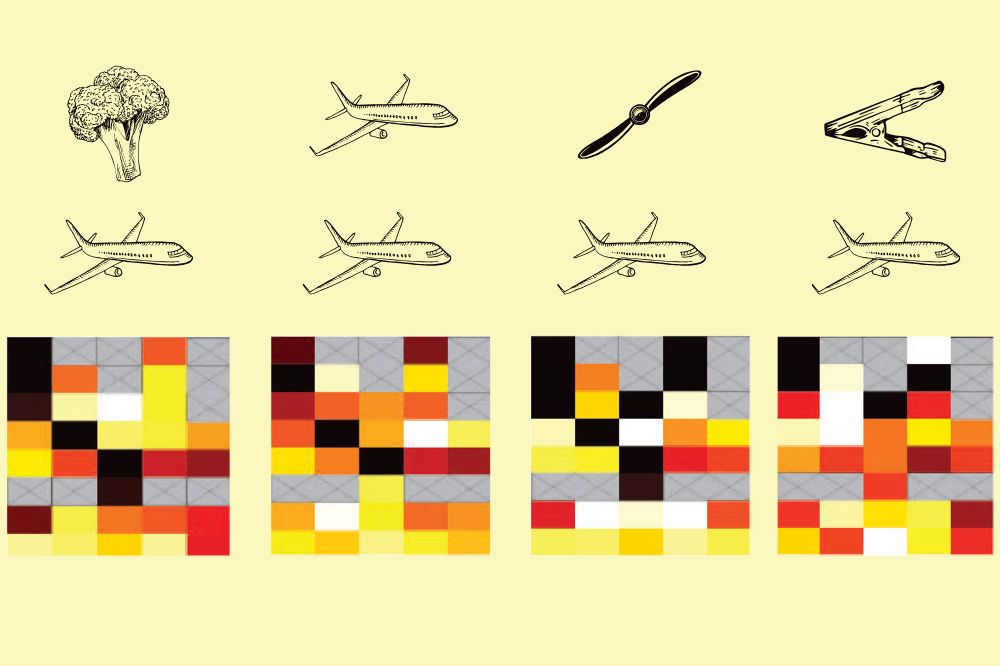2025-05-01 ジョンズ・ホプキンス大学(JHU)
<関連情報>
- https://hub.jhu.edu/2025/05/01/genetic-mutations-and-evolutionary-trick-makes-horses-athletic/
- https://www.science.org/doi/10.1126/science.adr8589
遺伝的停止標識を走らせると馬の酸素代謝とエネルギー生産が促進される Running a genetic stop sign accelerates oxygen metabolism and energy production in horses
Gianni M. Castiglione, Xin Chen, Zhenhua Xu, Nadir H. Dbouk, […] , and Elia J. Duh
Science Published:28 Mar 2025
DOI:https://doi.org/10.1126/science.adr8589
Editor’s summary
Beginning as early as 5000 years ago and lasting until just around 150 years ago, horses were integral to human societies. Their capacity for intense exertion led to their being used as everything from beasts of burden to elite racers. This athleticism is largely driven by increased oxygen consumption rates due to muscles full of mitochondria. Castiglione et al. found that horses evolved to cope with the increased oxidative burden brought about by mitochondrial activity through the evolution of a single point mutation that increases oxidative phosphorylation while simultaneously mitigating the consequent oxidative stress. —Sacha Vignieri
Structured Abstract
INTRODUCTION
Horses are famous examples of evolutionary novelty, with the fossil record chronicling their ascent from dog-sized ancestors into physiological powerhouses, long before domestication. In modern thoroughbred racehorses, mass-adjusted oxygen consumption is more than double that of elite human athletes, fueling the voracious energy production demands of equine skeletal muscle. Genomes of modern and ancient equids have revealed mutations in olfactory receptors, keratins, and myosin-related genes that are absent from humans and cows, yet none of these are directly involved in aerobic metabolism and energy production. How Equus ancestors met the energy demands associated with their remarkable morphological innovations is therefore unknown.
RATIONALE
To study the molecular underpinnings of equine aerobic metabolism, we focused on a clinically important pathway that can enhance mitochondrial bioenergetics while simultaneously mitigating the tissue-damaging oxidative stress caused by exercise or disease. The NRF2/KEAP1 pathway is a major area of focus in exercise science and clinical translational efforts, including chronic diseases such as emphysema. Diminished KEAP1 inhibitory activity leads to increased NRF2 activity, thereby enhancing antioxidant production and mitochondrial respiration. KEAP1 mutations have occurred at least twice in evolution: initially to facilitate the vertebrate transition from aquatic to terrestrial life by protecting against ultraviolet light–induced oxidative stress, and more recently during the evolution of birds to counterbalance the oxidative stress imposed by energetically demanding flapping flight.
RESULTS
We reveal that horses, donkeys, and zebras (Equus) possess a relic of the ancient Equidae radiation—a premature stop codon in KEAP1 (R15X) that evolved in a common Equus ancestor. Using mass spectrometry, we demonstrate that this de novo opal stop codon (UGA) does not truncate the protein and is instead recoded into a cysteine in horse KEAP1 (C15). Using biochemistry and structural biology, we show that opal recoding is facilitated by a set of Equus-specific mutations at the mRNA and protein levels that coevolved with R15X, ultimately enhancing opal recoding relative to human orthologs. Through cellular assays, we show that the evolution of R15C KEAP1 increases sensitivity to electrophiles and reactive oxygen species, leading to increased NRF2 activity and lower oxidative stress. Using comparative metabolomics of myotubes derived from thoroughbred quadriceps and CRISPR-Cas9–generated cell models, we provide evidence that this genetic recoding also accelerates adenosine 5′-triphosphate (ATP) production–coupled mitochondrial oxygen consumption rates. These processes provide an elegant solution to the dual problem of enhancing aerobic energy production while mitigating oxidative stress, likely explaining why R15X/C evolved in a common Equus ancestor under selection for improved locomotory bioenergetics.
CONCLUSION
We discovered coordinated biochemical adaptations from the distant past not captured by the fossil record, illustrating how recoding of a de novo stop codon can facilitate adaptation in vertebrates, a strategy previously thought restricted to viruses. These ancient evolutionary innovations can enlighten contemporary clinical efforts seeking to augment NRF2 function and also to promote read-through of disease-associated premature stop codons.
OPEN IN VIEWER
Opal recoding in horses alters protein phenotypes, enhancing exercise performance.
An extinct ancestor of Equus evolved an opal stop codon in KEAP1 (UGA; R15X) that is recoded into cysteine through previously unknown mRNA and protein mechanisms. The resulting R15C KEAP1 protein is more sensitive to electrophiles and reactive oxygen species (ROS), enabling increased NRF2 activity. This accelerates mitochondrial respiration while decreasing tissue-damaging oxidative stress.
Abstract
Horses are among nature’s greatest athletes, yet the ancestral molecular adaptations fueling their energy demands are poorly understood. Within a clinically important pathway regulating redox and metabolic homeostasis (NRF2/KEAP1), we discovered an ancient mutation—conserved in all extant equids—that increases mitochondrial respiration while decreasing tissue-damaging oxidative stress. This mutation is a de novo premature opal stop codon in KEAP1 that is translationally recoded into a cysteine through previously unknown mechanisms, producing an R15C mutation in KEAP1 that is more sensitive to electrophiles and reactive oxygen species. This recoding enables increased NRF2 activity, which enhances mitochondrial adenosine 5′-triphosphate production and cellular resistance to oxidative damage. Our study illustrates how recoding of a de novo stop codon, a strategy thought restricted to viruses, can facilitate adaptation in vertebrates.


